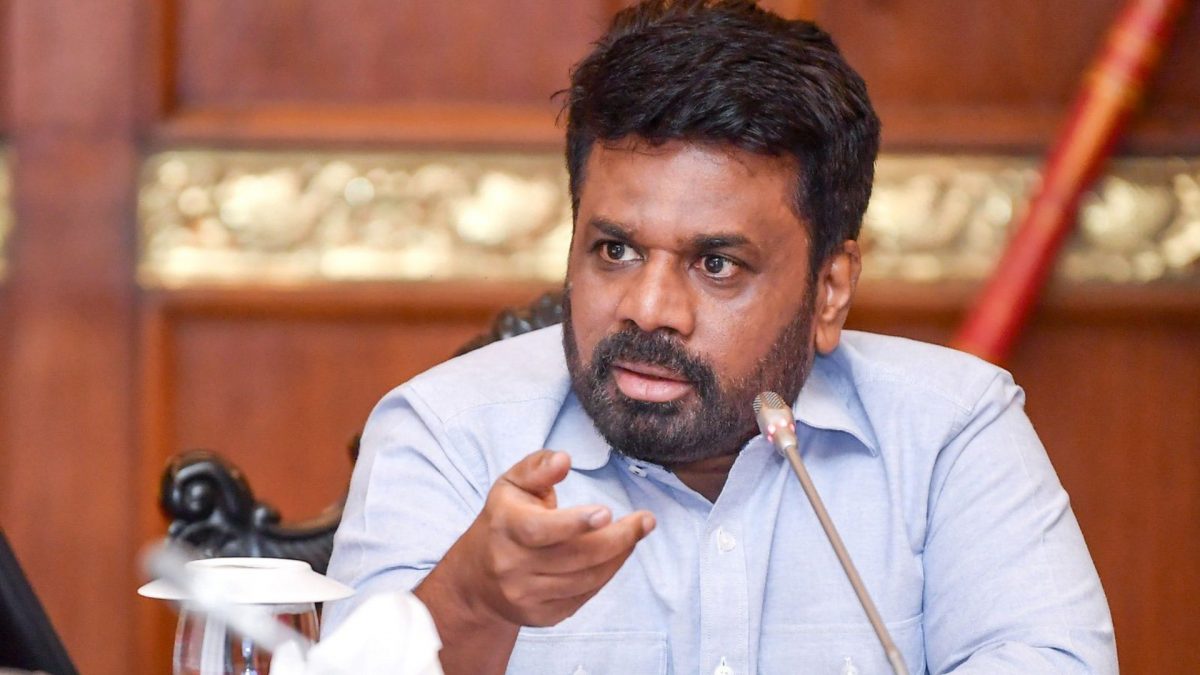When Sri Lankan President Anura Kumara Dissanayake meets his host, Chinese President Xi Jinping, at the Great Hall of the People in Beijing on Wednesday, he may be captivated by the charm of Chinese hospitality. Yet, behind the warm smiles and firm handshakes, he is likely to remain mindful of the immense challenges his country has endured. Beneath the surface of cordiality lies a complex equation that Sri Lanka might find daunting to confront.
Over the last 20 years, China has made significant investments in Sri Lanka as part, much of it coming under the Belt and Road Initiative (BRI). While these investments have been large and ambitious, they have raised global concerns about what is often termed “debt-trap diplomacy”.
The Hambantota Port deal is the most well-known example, where Sri Lanka leased this strategically vital facility to a Chinese company for 99 years. This agreement highlights the risks tied to such investments.
Amid the growing Chinese influence in Sri Lanka, India has emerged as a strong counterbalance. India has used its historical connections, economic aid and strategic initiatives to maintain a significant role in the region. This contrasting position of China with its aggressive economic tactics against India’s culturally rooted, strategic approach carries critical implications for Sri Lanka’s sovereignty and the stability of the broader region.
Mechanics of China’s debt diplomacy
China’s involvement in Sri Lanka’s economy began with grand promises of boosting infrastructure. Projects like the Hambantota Port, Colombo Port City and Mattala Rajapaksa International Airport were introduced as transformative initiatives. However, these projects, funded mostly through high-interest loans, soon exposed their hidden challenges.
Impact Shorts
More ShortsFor example, the Hambantota Port struggled to generate enough revenue to repay the debt, putting Sri Lanka under financial strain. As a result, the port was leased to China Merchant Port Holdings in 2017, giving Chinese control over an important maritime hub.
The Colombo Port City project also highlights China’s strategic goals. Built on reclaimed land, this financial district has raised concerns about environmental damage and the long-term consequences of allowing Chinese firms to manage reclaimed areas.
Similarly, the Mattala Rajapaksa International Airport, often called the “world’s emptiest airport”, shows the risks of investing in projects with little economic viability. These initiatives have added to Sri Lanka’s debt, with China holding around 10-15 per cent of the country’s external debt. These investments serve China’s strategic interests more rather than meeting Sri Lanka’s developmental needs.
Human cost of unsustainable debt
The financial impact of China’s debt diplomacy goes beyond just numbers and economic data. Sri Lanka’s 2022 economic crisis, worsened by unmanageable debt, caused severe shortages of essential goods, mass protests and political turmoil.
The government struggled to access foreign currency reserves to pay off debts and import necessary items leaving the economy in ruins. China’s reluctance to restructure its loans during this time revealed the dangers of relying on unclear financial agreements.
For ordinary people in Sri Lanka, this meant soaring prices, a lack of fuel and medicine and growing frustration across the country.
India’s as a reliable partner
During Sri Lanka’s economic crisis, India stepped up as a key ally. In 2022, India provided swift financial aid with a $4 billion assistance package. This support included lines of credit to help Sri Lanka import essential items like food, medicine and fuel.
Unlike China’s high-interest loans linked to large infrastructure projects, India’s aid focused on immediate relief directly addressing the urgent needs of the Sri Lankan people.
India’s support went beyond just financial help. Understanding the need for international cooperation, India played an active role in Sri Lanka’s negotiations with the International Monetary Fund (IMF). It supported debt restructuring and urged other creditors, including China, to join efforts to reduce Sri Lanka’s financial burden.
Through these actions, India not only demonstrated its commitment to helping its neighbour but also reinforced its image as a responsible and dependable regional partner.
Strategic investments for long-term gains
India’s involvement in Sri Lanka goes beyond just crisis management. Over the years, New Delhi has invested in development projects that aim to support long-term growth.
For example, the Trincomalee Oil Tank Farm project, a joint venture between the two countries, aims to improve Sri Lanka’s energy security while strengthening their cooperation. India has also focussed on renewable energy projects in northern Sri Lanka, offering an alternative to China’s focus on coal-based energy.
Another key area of partnership is the Colombo West Container Terminal, where India is working with Japan to develop an important port facility. This project provides an alternative to China’s control of the Colombo Port City. India also supports grassroots projects in areas like fisheries and agriculture focussing on people-centred development.
Balancing competing influences
Sri Lanka’s location makes it important to balance its relationships with both India and China. China’s financial support and focus on big infrastructure projects have made it a strong partner, but the risk of too much debt has led Sri Lanka to look for other options.
India’s focus on sustainability and respecting Sri Lanka’s independence provides a different approach. As Sri Lanka rebuilds its economy, how it handles its ties with India and China will determine its role in the Indian Ocean and beyond. Both India and China see Sri Lanka as important ally for the future of the region.
China and Sri Lanka started diplomatic relations in 1957, but India’s influence in Sri Lanka is based on a long history and shared culture. The connection through Buddhism, which started in India and is an important part of Sri Lankan identity, has been a key part of their relationship. In addition to cultural ties, India has built stronger connections through people-to-people relationships.
)